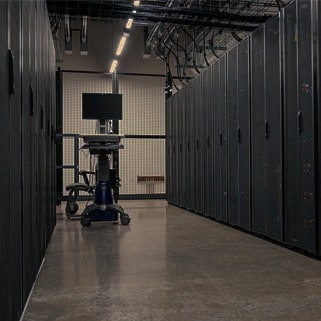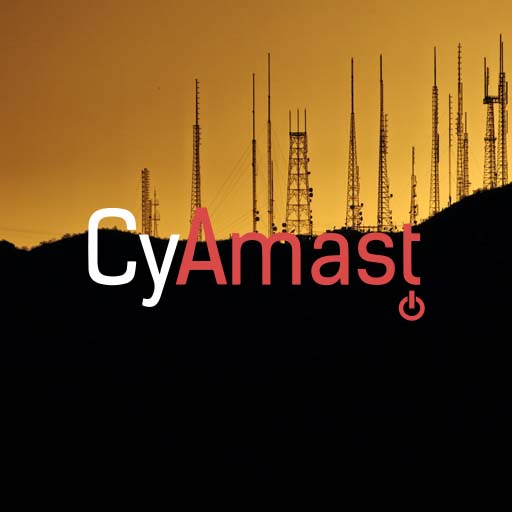INTRODUCTION
While the Internet of Things is rapidly gaining traction around the world, it’s critical to remember one factor that is critical to the technology’s existence and how, without it, the entire system could implode. Naturally, we’re referring to data.
By 2025, it is anticipated that there will be over 65 billion active IoT devices worldwide, each of which will require a data connection to operate and communicate with other devices. In fact, according to a recent IDC report, IoT devices will generate nearly 80 zettabytes by this time. This is a massive amount of data, and as IoT adoption increases, we must examine the impact on data centres worldwide.
Increased data storage is critical. A flood of new data is being generated and must be stored. For instance, all data associated with new account creation, including personal and financial information, as well as usage statistics, must be retained and secured. Additionally, software ecosystems powering consumer IoT like Amazon Alexa, will automatically store data such as all voice searches and search history information, or the routing information for an IIoT device, meaning that the more a device is used, the more data is created and the more space is required, especially when the rate of data creation for an individual device is multiplied by 65 billion…
With the influx of fresh data, most of it sensitive or at least personal, it’s evident that data centres must do more to encrypt data sent and received, as well as secure data stored. With numerous devices being utilised in the majority of scenarios, security is critical. As IoT devices evolve, hackers and unscrupulous internet users will experiment with new hacking techniques and develop the ability to crack these devices. Security measures are a never-ending and ferocious battleground.
Data Centre Functions & IoT
Data centre facilities operate 24 hours a day, consuming enormous amounts of electricity and producing enormous amounts of heat, measured in British Thermal Units, or BTUs. As computing loads increase, so does electricity consumption and heat. Temperature control is critical within the data centre to avoid equipment overheating, to regulate cooling, and to monitor overall efficiency. Traditional simple thermal sensors installed in IT closets, data centre rack space, and critical points of inflection throughout the facility – like air conditioning intake and exhaust vents – can monitor and control heat generation and output for cooling systems and the areas they are affecting to a certain degree, but not optimally.
This is also a vital role for lowering energy expenses, which are the data center’s largest operational expense. Data centres frequently overcool their facilities by several degrees merely to be safe. Environmental sensors, according to Gartner, can for every degree of increase in the baseline temperature, reduce energy expenses by 4%. This is because temperature sensors installed at the rack intake provide a significantly more accurate, real-time image of data centre temperatures than the traditional sensor layouts alone. This data can be utilised to optimise the cooling system’s efficiency, for example, by shutting down cooling units only when necessary.
Along with temperature control, humidity control is vital in avoiding damage to mission-critical equipment, as excessively high humidity can lead to the corrosion of electronic contacts and other sensitive hardware, whereas low humidity might lead to a damaging static electricity buildup. Environmental sensors give real-time data to verify that the facility’s humidity levels are ideal. Water damage presents some of the most serious risks to a data centre. Water damage, whether caused by a leaking air conditioner, a water-cooled rack, condensation, rainwater, or plumbing, can have serious operational and financial consequences.
IoT sensors for leak detection alert teams immediately upon the identification of a leak, allowing them to take corrective action. Rope sensors, for example, can be installed in difficult-to-reach areas such as around each cooling system, cooling distribution units, beneath raised floors, and anywhere else there is a potential leak source. Small IoT devices for leak detection are ideal for monitoring more isolated and small-scale areas, like IT closets, as well as as more prescriptive measures for specific assets in larger data centre operations like overflow pans.
While environmental monitoring is crucial for anticipating and responding to possible disasters, remote monitoring of batteries and Uninterruptible Power Supplies is also critical (UPS). Early detection of possible problems and prompt response to flaws or deterioration increases UPS battery system dependability and provides enterprises with the adaptability required in today’s dynamic data centres.
While a physical security breach at a data centre may result in the loss of equipment, the main concern is data disclosure. With businesses collecting personally identifiable information in a variety of ways, customers are growing increasingly concerned about the data’s security. Any threat to a company’s data has the potential to have a substantial impact on its reputation and overall business, as well as potentially resulting in severe financial loss. While it is unlikely that an entire server will be stolen, an asset monitoring solution, like a capability of the CyAmast platform, enables businesses to manage and track any asset, large or little, in real time, providing notifications when an asset is moved or tampered with, which enables people to respond promptly to any threat.
Monitoring and regulating physical access to the data centre itself is obviously vital too. Wireless IoT sensors can be deployed for identity and access management, identifying and counting persons in restricted areas. Similarly, IoT-enabled locks, card readers, and keypads may be used to monitor and regulate personnel entering and exiting the building, providing a multi-layered approach to security.
IoT is poised to revolutionise data centres in a variety of ways, from being the genesis for shifts toward edge computing, to the demands stemming from wide-spread 5G adoption. New requirements necessitate novel solutions. The Internet of Things (IoT) generates massive amounts of data and is reshaping the data centre sector. It is vital to ensure the efficient running of this mission-critical environment, whether it is an enterprise, managed services, cloud, or colocation data centre. IoT for data centre infrastructure management enables a holistic picture of current environmental conditions, resource utilisation, and security in order to maximise uptime, improve energy efficiency, reduce operating costs, and avoid data loss and exposure.
Preparing Data Centers For IoT
Lagging data centres will need to adapt to significant changes as a result of the increase in data demand and management requirements. Security and privacy will undoubtedly be a high priority and an essential requirement. Convergence of data usage and management requirements will necessitate a revolution of the entire industry. Data centres must improve their networks in preparation for the ubiquity of IoT. The majority of data centres are only equipped to meet bandwidth requirements on a middling level, and they will need to increase their connection count and overall speed to stay up with IoT, particularly the likely ubiquity 5G IoT will present. It’s worth noting, however, that Forrester Research suggests edge computing will store, process, and analyse 45 percent of IoT-generated data. Dealing with data at the edge could help improve data centre procedures by reducing the amount of data (and improving the quality of data) going into the centre. This is unlikely to offset the additional influx of data sufficiently enough to forgo the mentioned updates required for data centres.
The growing need for data storage may necessitate data centres reconfiguring their server farms to accommodate larger and more diverse data flows. Simultaneously, any data centre business may need to develop more robust load distribution mechanisms in order to provide improved IoT data management.
The Internet of Things can help data centres optimise their strategic operations. While data centre owners will experience increasing benefit from adoption, the greatest impact of IoT solutions will be felt by individual clients within massive shared data centres. The Internet of Things can assist in optimising the flow of their data, its security, storage requirements, and access capabilities – historically all problematic in shared environments.
Many data centre customers prefer a hands-on approach to server management. In the future, IoT may enable the data centre to pass on greater flexibility to the client, potentially delegating server administration to the consumers themselves. Customers may be able to monitor their servers, examine maintenance forecasts, and so on, by employing IoT-based data.
In Summary
The Internet of Things in all likelihood will continue to increase the sophistication of data centres through automation. Routine data centre functions such as patching, monitoring, upgrading, scheduling, and configuration can all be managed remotely via algorithmically-controlled Internet of Things devices. This means less human effort, tighter operating parameters, reduced costs, lower environmental impacts, and reduced threats.
The data centre business is well-known for its high energy use, and IoT may help it become more sustainable. AI-powered data centres, submerged data centres, and now IoT-managed data centres all highlight how the Internet of Things is transforming the data centre sector. With Cyamast at your helm, monitoring, controlling, and securing your IoT-enabled data centre, you can take full advantage of the benefits, without the business risk of introducing new vectors of attack.





